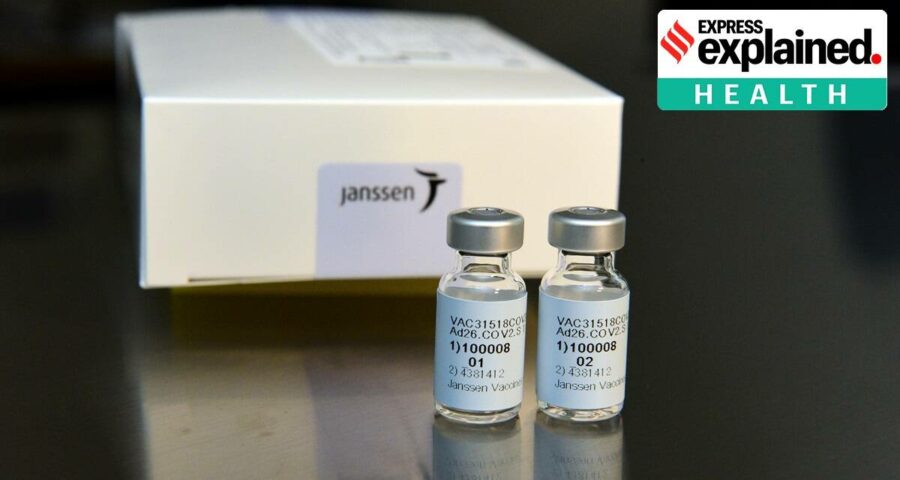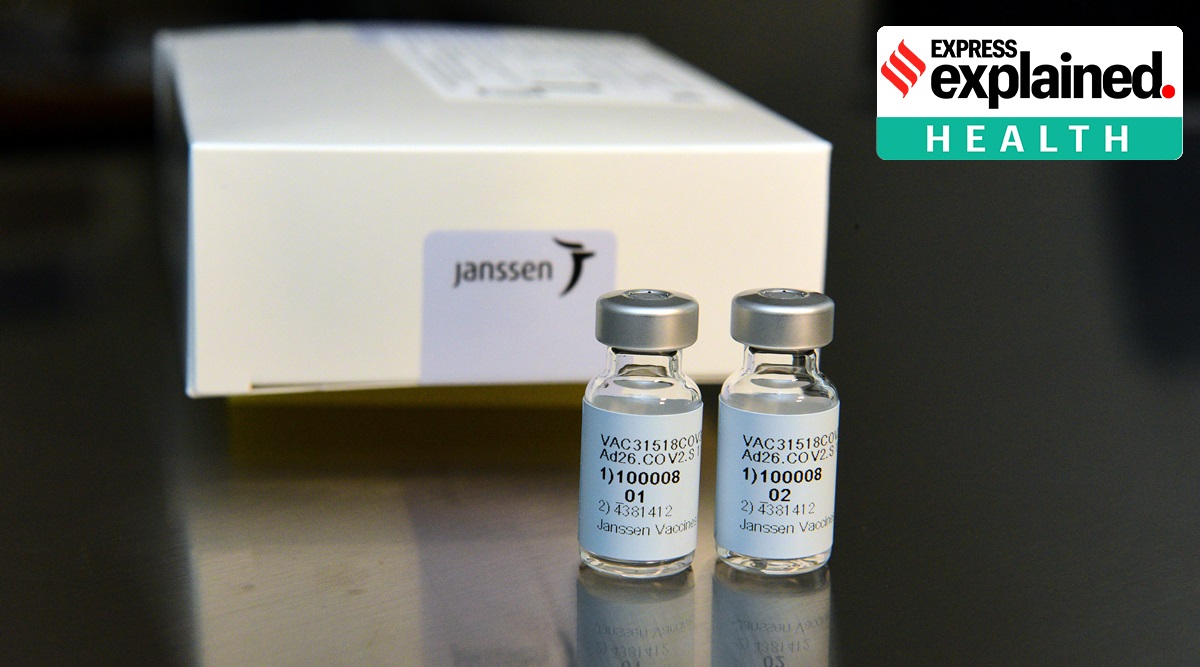The US Food and Drug Administration (FDA) has said that the single-dose vaccine for Covid-19 manufactured by Johnson & Johnson is safe and effective against the novel coronavirus. How does the shot work?
The US Food and Drug Administration (FDA) has said that the single-dose vaccine manufactured by Johnson & Johnson is safe and effective against SARS-CoV-2. If it is authorised, it will become the third COVID-19 vaccine to be approved in the US.
However, phase 3 trials for the vaccine, which include about 40,000 participants, are ongoing. But a preliminary analysis of 39,321 participants demonstrated vaccine efficacy of 66.9 per cent. This means that in a setting of a controlled trial, using the vaccine reduces the incidence of disease by 66.9 per cent. This, however, is different from how the vaccine will act in the “real world”, which is referred to as vaccine effectiveness.
How does the Johnson and Johnson vaccine for Covid-19 work?
This vaccine called Ad26.COV2.S uses some genetic material from the SARS-CoV-2 virus. More precisely, it uses the genetic code to make the spike protein, the protrusions that can be seen on the surface of the virus. The spike protein is used by many vaccines since this is what the virus uses to bind with human cells and initiate infection.
Once the vaccine is injected into the body, the goal is to trigger the immune system to make antibodies against the disease. But since vaccines do not consist of the entire genetic material of the virus, the viral genetic material cannot make people sick.
Therefore, the antibodies produced by the immune system when triggered by a vaccine should help the body recognise the actual virus and fight it off, if and when a person is infected.
Specifically, the Ad26.COV2.S vaccine is a non-replicating viral vector vaccine as opposed to an mRNA vaccine. Non-replicating means that the genetic material inside a vaccine will not make copies of itself once in the human body. This is important because when an actual virus enters the body, it will typically start to replicate to spread the infection. The viral vector is a type of delivery device, which will carry and deliver the stabilised variant of the SARS-CoV-2 spike protein into the cells once the vaccine is injected.
In the case of Ad26.COV2.S, the viral vector used is an adenovirus (adenovirus 26), which causes the common cold. The vector too is genetically modified so that it cannot replicate and lead people to fall sick. There are other adenovirus-based vaccines, one for Ebola was approved by the European Medicines Agency in July 2020 and others for Zika, filovirus, HIV, HPV, malaria and respiratory syncytial virus are being investigated.
📣 JOIN NOW 📣: The Express Explained Telegram Channel
How is it different from other RNA vaccines?
The vaccine is provided as a refrigerated suspension in a multi-dose vial containing five doses that can be stored at 2°C to 8°C. Vials that are unpunctured can be stored between 9°C and 25°C for up to 12 hours. After the first dose has been withdrawn, the vial should be held between 2° and 8°C for up to 6 hours or at room temperature (maximum temperature 25°C) for up to two hours. If not used within these time limits, the vial should be discarded.
As the vaccine rollout is underway across the world, the logistics for vaccine delivery, which includes storage and supply, has been much discussed. The vaccine manufactured by Pfizer-BioNTech, for instance, is an mRNA (messenger vaccine) that needs to be stored at low temperatures (-70°C). This means it cannot be stored in a refrigerator.
The one manufactured by Oxford-AstraZeneca is also a viral vector vaccine like Ad26.COV2.S and delivers the genetic code of the spike protein to the body, but what differentiates viral vectored vaccines from mRNA vaccines is that the genetic material to manufacture the spike protein and that of the virus (the vector) is stored in DNA rather than RNA. Once such a vaccine is administered, first the viral vector will infect the human cells and then deliver the DNA, which contains instructions to make the spike protein to the nucleus of the cell.
What distinguishes Ad26.COV2.S from the ones manufactured by Moderna, Oxford/AstraZeneca and Pfizer-BioNTech is that it is delivered as a single-dose. Right now, the vaccines that are in use globally, which include Moderna, Oxford/AstraZeneca and Pfizer-BioNTech, are all administered in two doses a few weeks apart. A second booster dose is required to build stronger and longer immune memory.
Because its efficacy is at 66 per cent, the Ad26.COV2.S could be less effective than Moderna and Pfizer, which have showed vaccine efficacy of about 94 and 95 per cent, respectively.
Source: Read Full Article


